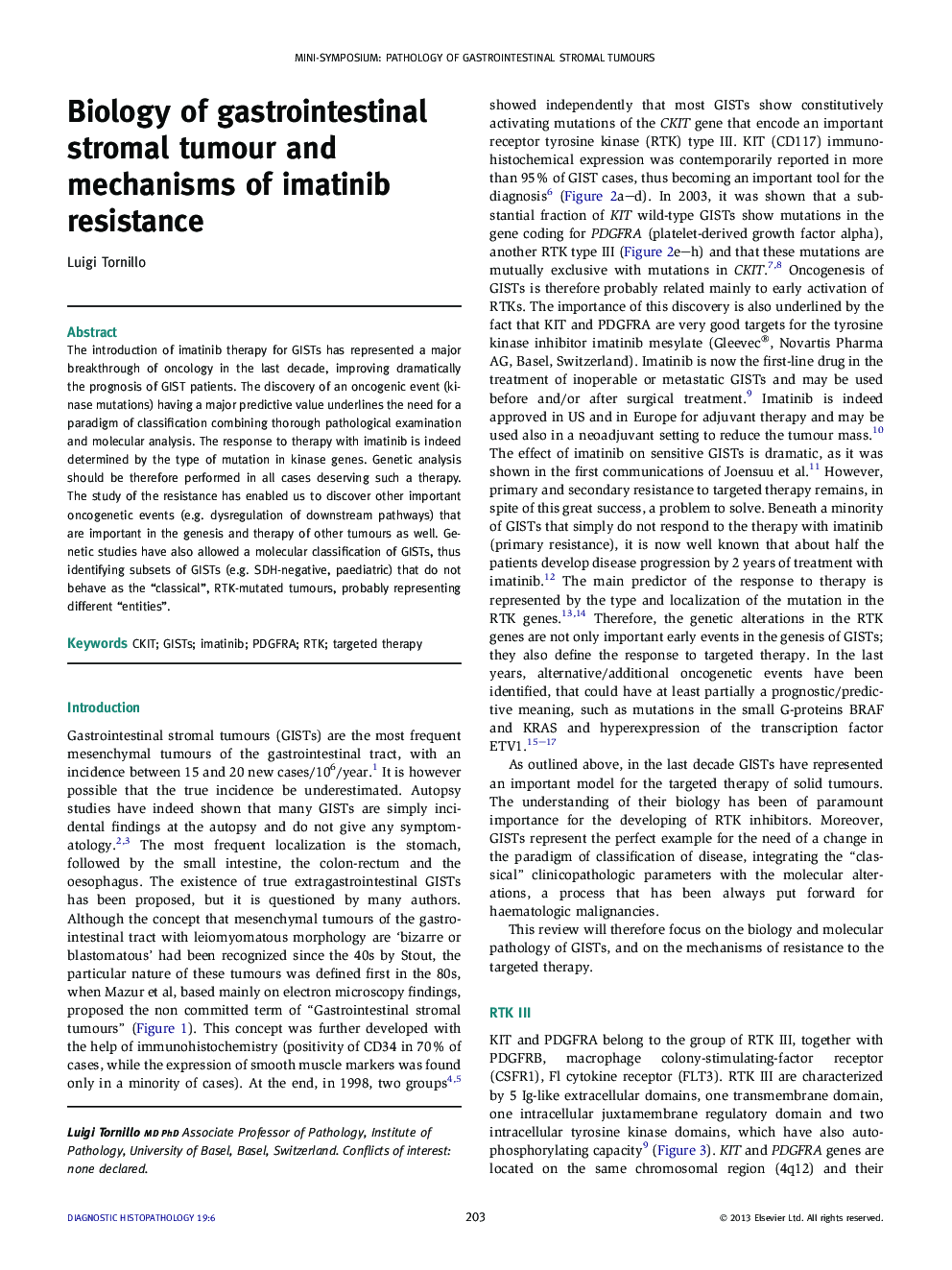| Article ID | Journal | Published Year | Pages | File Type |
|---|---|---|---|---|
| 4131283 | Diagnostic Histopathology | 2013 | 8 Pages |
The introduction of imatinib therapy for GISTs has represented a major breakthrough of oncology in the last decade, improving dramatically the prognosis of GIST patients. The discovery of an oncogenic event (kinase mutations) having a major predictive value underlines the need for a paradigm of classification combining thorough pathological examination and molecular analysis. The response to therapy with imatinib is indeed determined by the type of mutation in kinase genes. Genetic analysis should be therefore performed in all cases deserving such a therapy. The study of the resistance has enabled us to discover other important oncogenetic events (e.g. dysregulation of downstream pathways) that are important in the genesis and therapy of other tumours as well. Genetic studies have also allowed a molecular classification of GISTs, thus identifying subsets of GISTs (e.g. SDH-negative, paediatric) that do not behave as the “classical”, RTK-mutated tumours, probably representing different “entities”.
